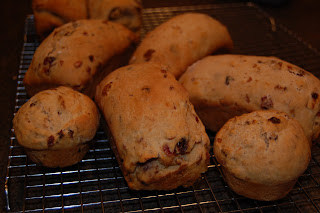 Panettone is a rich (fat included, with also other ingredients) Christmas bread originating from Milan. There are many folktales about its origins, the most popular being that it was created a few hundred years ago by a humble baker named Tony to woo his beloved, the daughter of a rich merchant. More importantly, he had to win over the father to the idea of his daughter marrying a baker, so he pulled out all the stops, filling his bread with the baker’s equivalent of the gifts of the wise men, Butter, Brandied fruits and nuts and sugar. The merchant was so impressed that he not only gave his daughter in marriage, but he also Tony up with his own bakery in Milan with the promise that he would continue to make his pane Tony.
Panettone is a rich (fat included, with also other ingredients) Christmas bread originating from Milan. There are many folktales about its origins, the most popular being that it was created a few hundred years ago by a humble baker named Tony to woo his beloved, the daughter of a rich merchant. More importantly, he had to win over the father to the idea of his daughter marrying a baker, so he pulled out all the stops, filling his bread with the baker’s equivalent of the gifts of the wise men, Butter, Brandied fruits and nuts and sugar. The merchant was so impressed that he not only gave his daughter in marriage, but he also Tony up with his own bakery in Milan with the promise that he would continue to make his pane Tony. This was a difficult bread to make. It took almost two weeks to make the barm (a sour dough starter) and another day to soak the dried fruit in brandy (not a good brandy mind you) and another day to let the sponge soak overnight. Man, this was a wet bread and after mixing it, found that it took a ton more flour than it called for, but that didn’t surprise me considering the dried fruit was still moist. I decided to have fun with this one and eliminate the candied fruit because quite honestly, I can’t stand the taste. I just went with the dried fruit of plums, Turkish apricots, craisins, raisins, and dates. There were many options for shaping this, and the 



